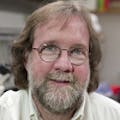Picture this. It is 1966. You are standing in a government office in Washington, DC, watching a uniformed official tell a man in business attire, “Your mission is to eradicate an enemy that has killed more people than both world wars combined. You will have a paltry budget, a small team, and should you fail, the Secretary will disavow any knowledge of your actions.”
To continue reading, subscribe to Eco‑Business.
There's something for everyone. We offer a range of subscription plans.
- Access our stories and receive our Insights Weekly newsletter with the free EB Member plan.
- Unlock unlimited access to our content and archive with EB Circle.
- Publish your content with EB Premium.
It sounds like a scene from a Hollywood movie. And, indeed, it mirrors the opening scenes of the Mission: Impossible television series that premiered that year. But it really happened, if not in precisely those words. The official was Assistant Surgeon General James Watt; the man with the mission was Communicable Disease Center (CDC) scientist Donald Henderson; and the enemy was smallpox.
The mission certainly seemed impossible. At the time, smallpox was killing as many as two million people, and infecting another 15 million, each year. Yet, like in the series, Henderson and his team at the World Health Organization defied expectations. In just over a decade, smallpox became the first – and, so far, the only – infectious human disease ever to be fully eradicated.
“
As Foege has pointed out, the eradication of smallpox proves that “global efforts are possible.” We do not “have to live in a world of plagues, disastrous governments, conflict, and uncontrolled health risks.”
The key to this tremendous medical achievement was not, as one might expect, some major health breakthrough (the smallpox vaccine had been around since the eighteenth century). It was diplomacy, flexibility, and cooperation.
From the beginning, the WHO lacked faith in a vaccination campaign. Many, including the WHO director-general, believed that, to stop smallpox, all 1.1 billion people in the 31 affected countries, including those in remote villages, would have to be inoculated – a logistical nightmare.
That is why WHO delegates debated for days before agreeing, by the slimmest margin ever, to provide a measly $2.4 million per year for the effort – too little to cover the costs of whatever vaccine was not donated, let alone fund the necessary logistical support. Many donors shared this pessimism, believing that their money would be better spent on, say, health-care infrastructure. Even UNICEF decided against contributing to the campaign.
In fact, the decision to assign Henderson to the unenviable job of spearheading the campaign stemmed from the WHO director-general’s decision to put an American in charge, so that the United States, not the WHO, would take the blame for the program’s failure. (Henderson tried to refuse the role, but there was no “should you choose to accept it” in this episode.) Yet Henderson managed to turn a bad hand into a winning one, with a key insight.
Henderson recognized that the Soviet Union – which had been pressing for an eradication campaign for several years, and had already pledged to donate 25 million doses of vaccine annually – would not be enthusiastic about an American leading the charge.
So he reached out to the Soviet deputy health minister, Dimitri Venediktov, with whom he established a rapport that enabled the two sides to work together on strategy and logistics, in addition to their vaccine donations (the US had agreed to provide 50 million doses each year). The two most unlikely allies ended up leading the fight together.
Henderson’s knack for diplomacy was matched by an eye for talent and leadership. He insisted that all of his staff spend at least a third of their time in the field, working with local officials and visiting villages, so that they could see firsthand the challenges of mass vaccination.
Among those personnel was William Foege, a Lutheran missionary doctor working as a consultant for the CDC in Nigeria. One day in December 1966, Foege got word of a smallpox case in another village and immediately traveled there to vaccinate the victim’s family and other villagers.
“
Humanity cannot live in a world of polluted air and water, empty seas, vanishing wildlife, and denuded lands. The ecological challenges we now face are matters of public health and welfare, just as smallpox was.
But Foege was worried that a wider outbreak might be unfolding, and he did not have enough doses to vaccinate everyone in the area. So he adopted a different tactic: he sent runners into all villages within 30 miles to check for more cases, and then vaccinated people only in the four places where cases turned up. This created a “ring” of vaccination around infected people that broke the chain of infection.
Foege’s strategy was extended to eastern Nigeria, then introduced to other parts of West Africa, and ultimately applied to the most challenging environment of all: India, with its half-billion people. It took 130,000 trained health workers 20 exhausting months, but they eliminated the scourge of smallpox that had tormented India for millennia.
Then, in spite of natural disasters, the kidnapping of WHO personnel, and civil war, health workers repeated that success in Bangladesh, Ethiopia, and Somalia. Finally, in 1980, the world was officially free of smallpox.
Fifty years after the launch of this daring mission, the tremendous achievement that emerged from it is fading from memory. But the lessons it carries for galvanizing a fractious international community to tackle a shared challenge could not be more important, especially at a time when urgent problems like environmental degradation demand global solutions.
As Foege has pointed out, the eradication of smallpox proves that “global efforts are possible.” We do not “have to live in a world of plagues, disastrous governments, conflict, and uncontrolled health risks.” Instead, “the coordinated action of a group of dedicated people” can “bring about a better future.”
Humanity cannot live in a world of polluted air and water, empty seas, vanishing wildlife, and denuded lands. The ecological challenges we now face are matters of public health and welfare, just as smallpox was. Our mission, whether we want to accept it or not, is to summon the collective will to halt our self-destruction.
Sean B. Carroll is Vice President for Science Education at the Howard Hughes Medical Institute and Professor of Molecular Biology and Genetics at the University of Wisconsin–Madison. His latest book is The Serengeti Rules: The Quest to Discover How Life Works and Why It Matters.
Copyright: Project Syndicate, 2016.
www.project-syndicate.org











